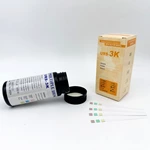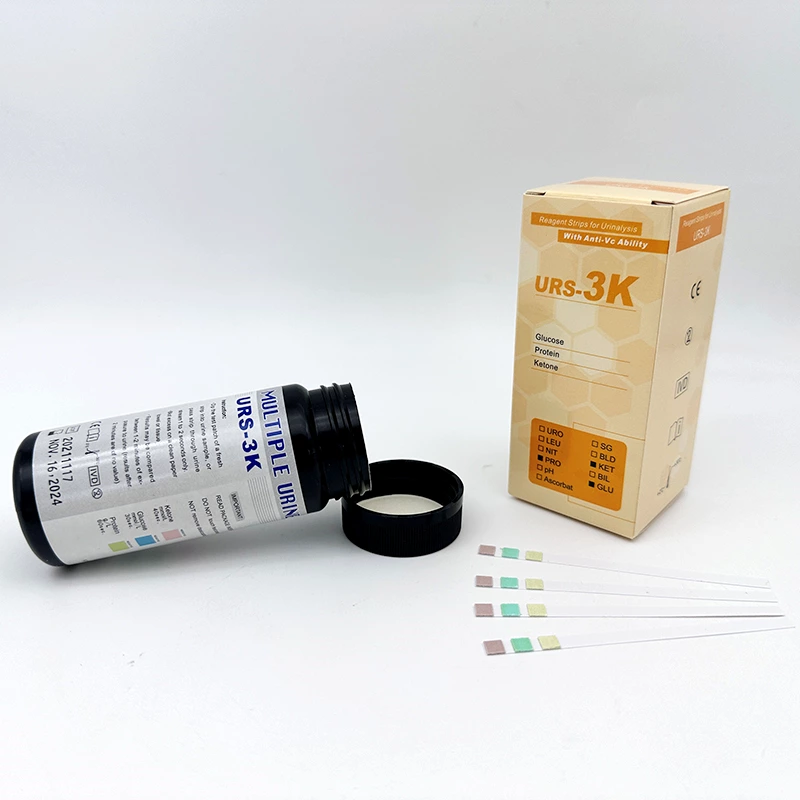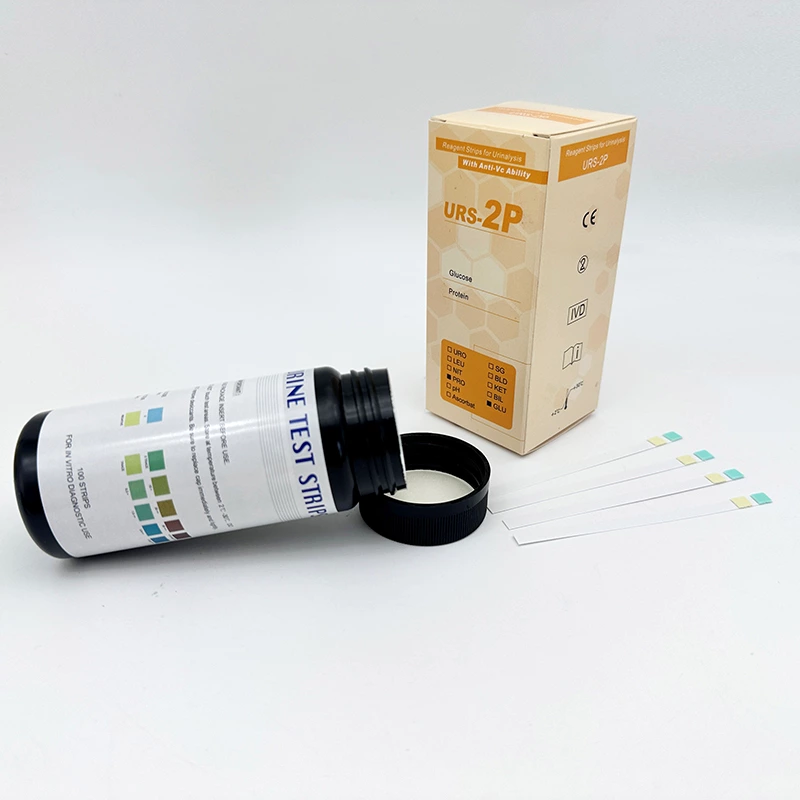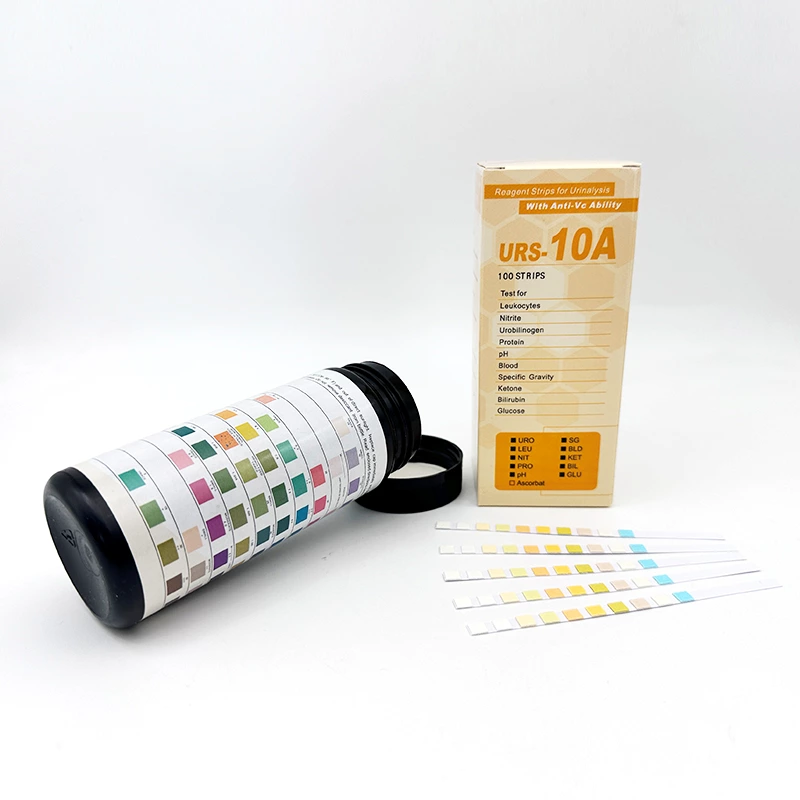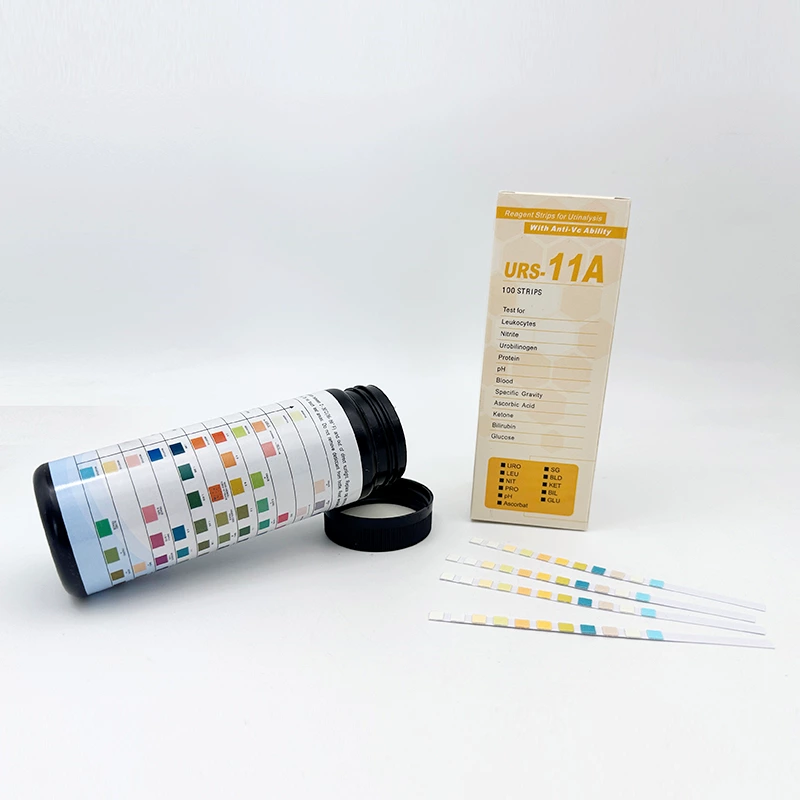Diagnos Urinalysis Reagent Strips(3K) OEM/ODM
This Reagent Strips for Urinalysis (from 1 parameter to 11 parameters). For the semi-quantitative and qualitative detection of Glucose, Bilirubin, Ketone, Specific Gravity, Blood, pH, Protein, Urobilinogen, Nitrite, Leukocytes and Ascorbic Acid in urine
For self-testing in vitro diagnostic use. It is only for single use, do not reuse.
The performance characteristics of Reagent Strips for Urinalysis (URS) have
been determined both in the laboratory and in clinical tests. Parameters of
importance to the user are sensitivity, specificity, accuracy, and precision.
Generally, Urine Reagent Strips (URS) have been developed to be specific for
the constituent to be measured with the exception of interferences listed above.
(See LIMITATIONS OF PROCEDURE)
For visually read strips, accuracy is a function of the manner in which the color
blocks on the color chart are determined and the discrimination of the human eye
in reading the test. Precision is difficult to assess in a test of this type because of
the variability of the human eye.
Glucose: This test is specific for glucose; no substances excreted in urine other
than glucose is known to give a positive result. The reagent area does not react
with lactose, galactose, fructose, or reducing metabolites of drugs; e.g.
salicylates and nalidixic acid. This test may be used to determine whether the
reducing substances found in urine is glucose.
Bilirubin: The test is considered specific for bilirubin in urine.
Ketone: The ketone test area provides semi-quantitative results and reacts with
acetoacetic acid in urine. This test does not react with beta-hydroxybutyric acid
or acetone.
Specific Gravity: The specific gravity test permits determination of urine specific
gravity between 1.000 and 1.030. In general, the specific gravity test correlates
within 0.005 with values obtained with the reflective index method
Blood: This test is slightly more sensitive to free hemoglobin and myoglobin
than to intact erythrocytes.
pH: The pH test area permits quantitative differentiation of pH values to one unit
within the range of 5-9. pH reading is not affected by variation in the urinary
buffer concentration.
Protein: The test area is more sensitive to albumin than to globulin, hemoglobin,
Bence-Jones proteins, and mucoprotein; a negative result does not rule out the
presence of these other proteins.
Urobilinogen: The absence of urobilinogen in the specimen being tested cannot
be determined with this test.
Nitrite: Comparison of the reacted reagent area on a white background may aid
in the detection of low levels of nitrite ion, which may otherwise be missed. This
test is specific for nitrite and will not react with substances normally excreted in
the urine.
Leukocytes: This test will not react with erythrocytes or bacteria common in
urine.
Ascorbic Acid: This test can detect ascorbic acid in concentrations as low as
0.6 mmol.L-1in urine.
Get in Touch
Contact Us
2nd Floor, Building 6, Electronic Information Industrial Park, No. 2 Haiyang South Road, Chengnan Street, Rugao City, Jiangsu Province, PEOPLE'S REPUBLIC OF CHINA.

